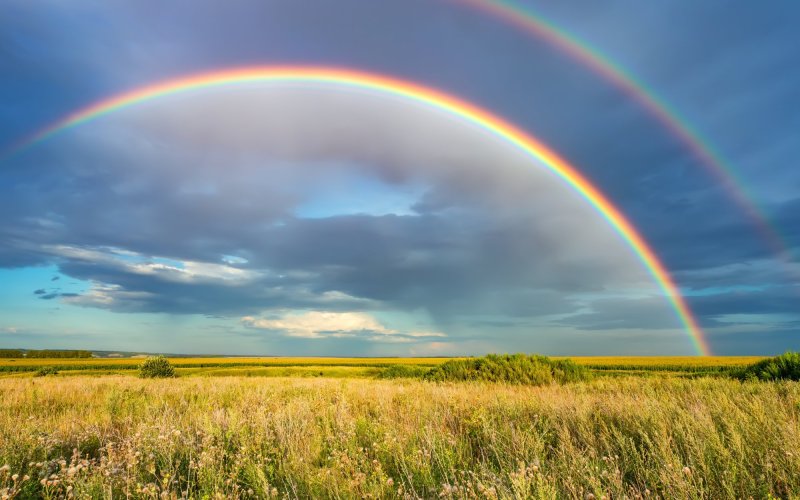The formation of a rainbow is one of the proofs that light is an (electromagnetic) wave. When the wave encounters an obstacle, it can bounce off or pass through the obstacle. In the case of passage into an obstacle (and exit from it), the direction of propagation of this wave changes. In physics, we call this phenomenon refraction. We all know this action — for example, if we look at a spoon immersed in a glass of water.
So, light is deflected from its original direction on its way from the Sun (or other source) due to passing through various obstacles. The angle by which the direction of light propagation changes depends on the material from which the light passes and the material into which it enters, and the quantity that describes these properties of materials is called the index of refraction. The size of the refractive index tells us how big the change in the direction of propagation of the beam will be. The second factor in the formation of a rainbow is that white light is not just white, but actually consists of a wide variety of colours, which was demonstrated by the decomposition of white light by Isaac Newton for the first time. If we combine these colours, we get a white colour and conversely, if we decompose the white colour, we will see individual colours (just as, for example, we can decompose a musical chord into individual notes). Colours differ in that they have different frequencies (just like musical tones have different frequencies). The violet colour has the highest frequency, the red colour the lowest. But how are these two mentioned phenomena and the formation of the rainbow related? For the formation of a rainbow, it is essential that the light enters the water droplets during propagation (therefore it must rain) and the refraction index (that is, how much a substance changes the direction of light propagation) is not the same for all frequencies. The higher the frequency, the higher the refraction index (between air and water, the red colour has a refraction index of approx. 1.33 and the purple 1.34). Since the index of refraction is different for each colour, it will be refracted differently. Therefore, the original beam that enters the drop of water becomes a diverging bundle of individual colours. However, the differences between the individual rays are very small but if the ray that enters a drop of water is split into individual colours as it passes through, then it is reflected from the inside of the drop. Then, due to the transition from the drop to the air, the rays are split even more.
The difference between the directions of the individual colours are already so big that we will not observe them as one ray but as several different coloured rays. It can be deduced that the angle between the Sun (or other light source), the drop of water and our eye must be 42° for the rays to pass the above mentioned path. That’s why we don’t always see a rainbow when it rains but only when the Sun and the rain are exactly in this constellation (it’s easily seen in this picture). This is how we explained the formation of one ray but since there are many raindrops, separate rays reach our eyes from all the drops that are at this angle and that is why we can see a rainbow as a circular section. It is even possible to see multiple rainbow arcs — if the light in a drop of water is reflected not once but twice (or three times), the angle that must be between the Sun, the drop and us will be different and therefore the angle of the rainbow section will be different.
Want to ask something?
Send us an e-mail with the subject “Physics mysteries” to the address:
We can't wait to tackle your interesting questions!





